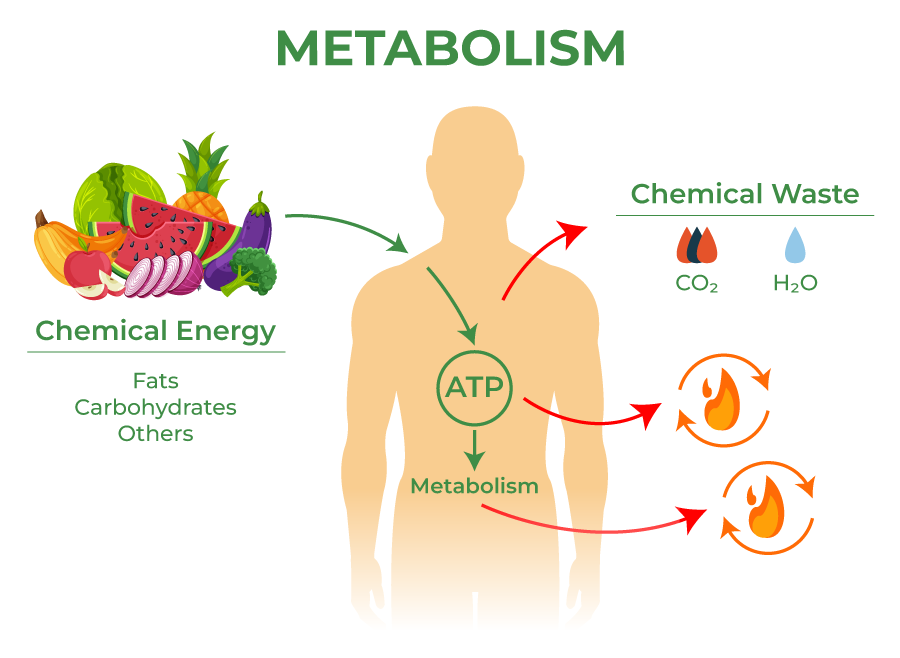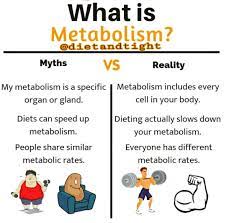
What is Metabolism? How Does metabolism work?
အောက်ဆုံးထိ ဆွဲကြည့်ပေးကြပါ ခင်ဗျာ
What Is Metabolism?
Digestion (articulated: meh-TAB-uh-liz-um) refers to the chemical reactions that convert food into energy in the cells of the body. Our bodies need this energy to do all that from moving to thinking to developing.
The metabolic chemical reactions are controlled by specific proteins in the body. Huge number of metabolic responses occur simultaneously — all controlled by the body — to keep our cells solid and working.
How Does Metabolism Work?
After we eat food, the digestive system uses enzymes to:
- break proteins down into amino acids
- turn fats into fatty acids
- turn carbohydrates into simple sugars (for example, glucose)
When required, the body can get its energy from sugar, amino acids, and fatty acids. These mixtures are consumed into the blood, which conveys them to the cells.
Other enzymes speed up or regulate the chemical reactions that go into “metabolizing” these compounds once they enter the cells. During these cycles, the energy from these mixtures can be delivered for use by the body or put away in body tissues, particularly the liver, muscles, and muscle to fat ratio.
Metabolism is a balancing act involving two kinds of activities that go on at the same time:
- building up body tissues and energy stores (called anabolism)
- breaking down body tissues and energy stores to get more fuel for body functions (called catabolism)
Anabolism (pronounced: uh-NAB-uh-liz-um), or constructive metabolism, is all about building and storing. It supports the growth of new cells, the maintenance of body tissues, and the storage of energy for future use. In anabolism, small molecules change into larger, more complex molecules of carbohydrates, protein, and fat.
Catabolism (pronounced: kuh-TAB-uh-liz-um), or destructive metabolism, is the process that produces the energy needed for all activity in the cells. Cells break down large molecules (mostly carbs and fats) to release energy. This provides fuel for anabolism, heats the body, and enables the muscles to contract and the body to move.
As complex chemical units break down into more simple substances, the body releases the waste products through the skin, kidneys, lungs, and intestines.

What Controls Metabolism?
A few chemicals of the endocrine framework assist with controlling the rate and bearing of digestion. Thyroxine, a chemical made and delivered by the thyroid organ, assumes a key part in deciding how quick or slow the synthetic responses of digestion go in an individual’s body.
Another organ, the pancreas, secretes chemicals that assist with deciding if the body’s really metabolic movement at any one time are anabolic (articulated: anabolic (pronounced: an-uh-BOL-ik) or catabolic kat-uh-BOL-ik). For instance, more anabolic movement as a rule occurs after you eat a dinner. This is because eating raises blood glucose levels, the body’s primary fuel. The pancreas detects this expanded glucose level and deliveries the chemical insulin, which signals cells to build their anabolic exercises.
Chemical metabolism is a complicated process. So it’s not shocking that many individuals think about it in its most straightforward sense: as something that impacts how effectively our bodies gain or get more fit. That is where calories come in. A calorie is a unit that actions how much energy a specific food gives to the body. A chocolate bar has a larger number of calories than an apple, so it gives the body more energy — and some of the time that can be an overdose of something that is otherwise good. The body stores calories primarily as fat, similar to how a car stores gas in the gas tank until it is required to power the engine. On the off chance that you stuff a vehicle’s fuel tank, it gushes out over onto the asphalt. Similarly, if a person consumes an excessive amount of calories, they “spill over” into excess body fat.
The amount of exercise a person does, the amount of fat and muscle in their body, and their basal metabolic rate (BMR) all affect how many calories they burn in a day. A person’s resting metabolic rate (BMR) is the rate at which their body “burns” calories as energy.
The BMR can assume a part in an individual’s propensity to put on weight. For instance, somebody with a low BMR (who subsequently consumes less calories while very still or resting) will generally acquire pounds of muscle to fat ratio after some time than a comparative measured individual with a typical BMR who eats a similar measure of food and gets a similar measure of activity.
A person’s genes and some health issues can affect BMR. Body composition also plays a role; individuals with more muscle and less fat typically have higher BMRs. However, individuals can change their BMR in some ways. For instance, an individual who practices more consumes more calories, yet turns out to be all the more in great shape, which builds their BMR.
- Are Canned Beans Healthy? Nutrition, Benefits, and Downsides

- What is the message of the song “Imagine” by John Lennon brainly?

- What is the mean of Wind of Change ?

- The Key Vitamin That Prevents Dementia

- Coffee May Help Protect Against AFib, Challenging Advice to Avoid It
- What Is The Difference Between Being Hard of Hearing and Deaf?



Nora 💌
Thanks
Thanks you for sharing this article ✍️✍️✍️and nice song🎵🎶🎧❤️😍😘🥰❤️🌹💞💞💞💞🩷🩷🩷🫶🫶
Miss you Ko Ko Mg
thanks for this knowledge
Thanks for sharing 🥰❤️
I’m Interesting Metabolism article.Thank a lot of sharing knowledge.I like song.✨💜
သီချင်းကောင်းလေးပါ
Thanks lots to know about metabolism and good song 🎵
Thanks for everything!
I’m interested in metabolism.
Thanks for sharing knowledge!
thanks you very much😍😍😍😍😍
Thanks lots for sharing Knowledge about metabolism and good song 🎵
💐💐💐🌷
Thanks for sharing
Thanks
You actually make it seem so easy with your presentation. Thanks you.
Chemical metabolism is a complicated process 🙄
Knowledgeable
Thanks.
Chemical metabolism is complicated process
Really appreciate you sharing this article post.Really looking forward to read more. Cool.
This article is my like
Individuals can change their BMR in some ways. Generally young people have high BMR.
The more we older, the lower BMR. I learned about metabolism in university, you remind my memory. Thanks lots!
Thanks you so much for your sharing 😘
Wow good song ❣️
Thanks for sharing this interesting article. Be healthy and take care all.